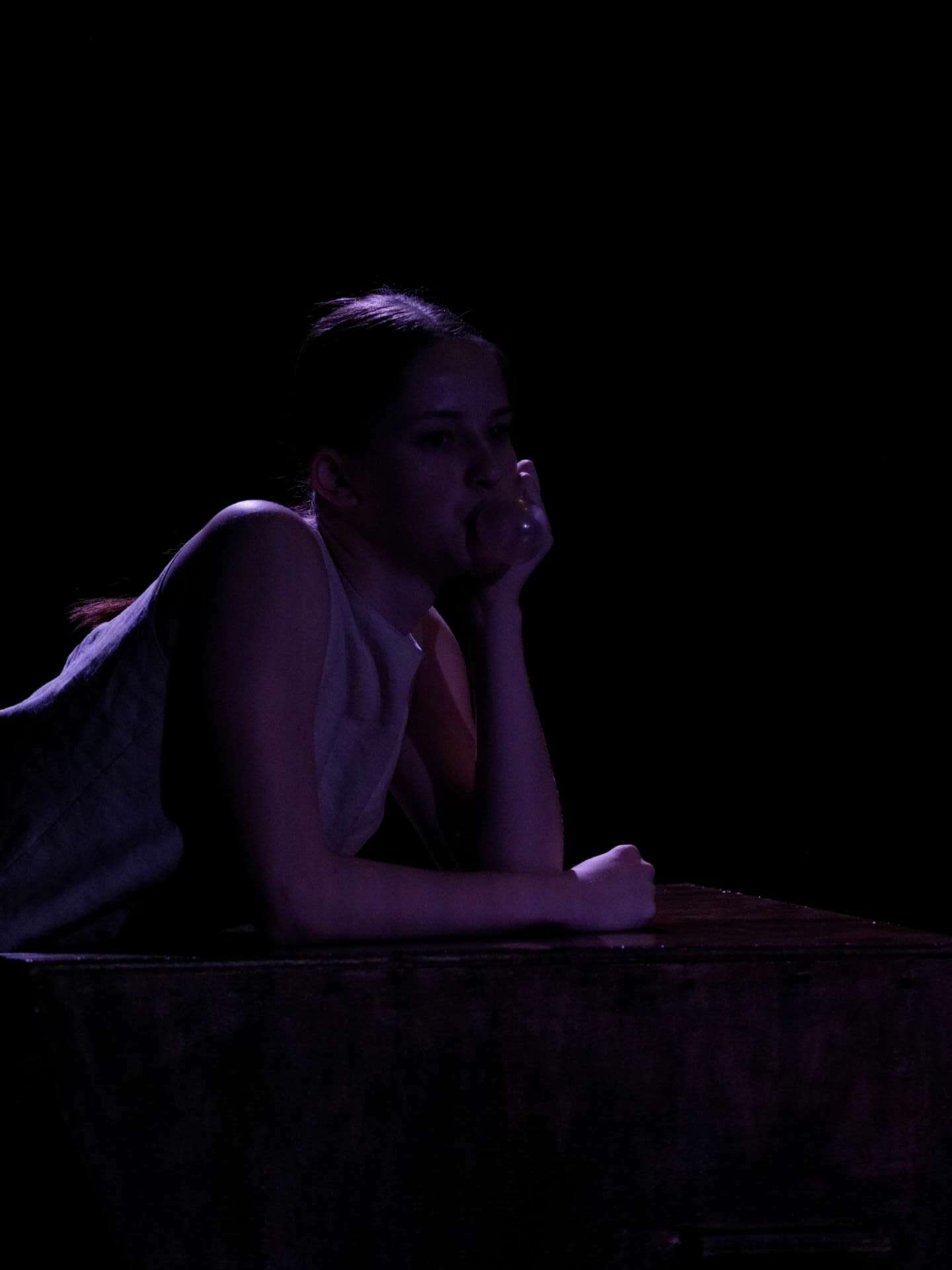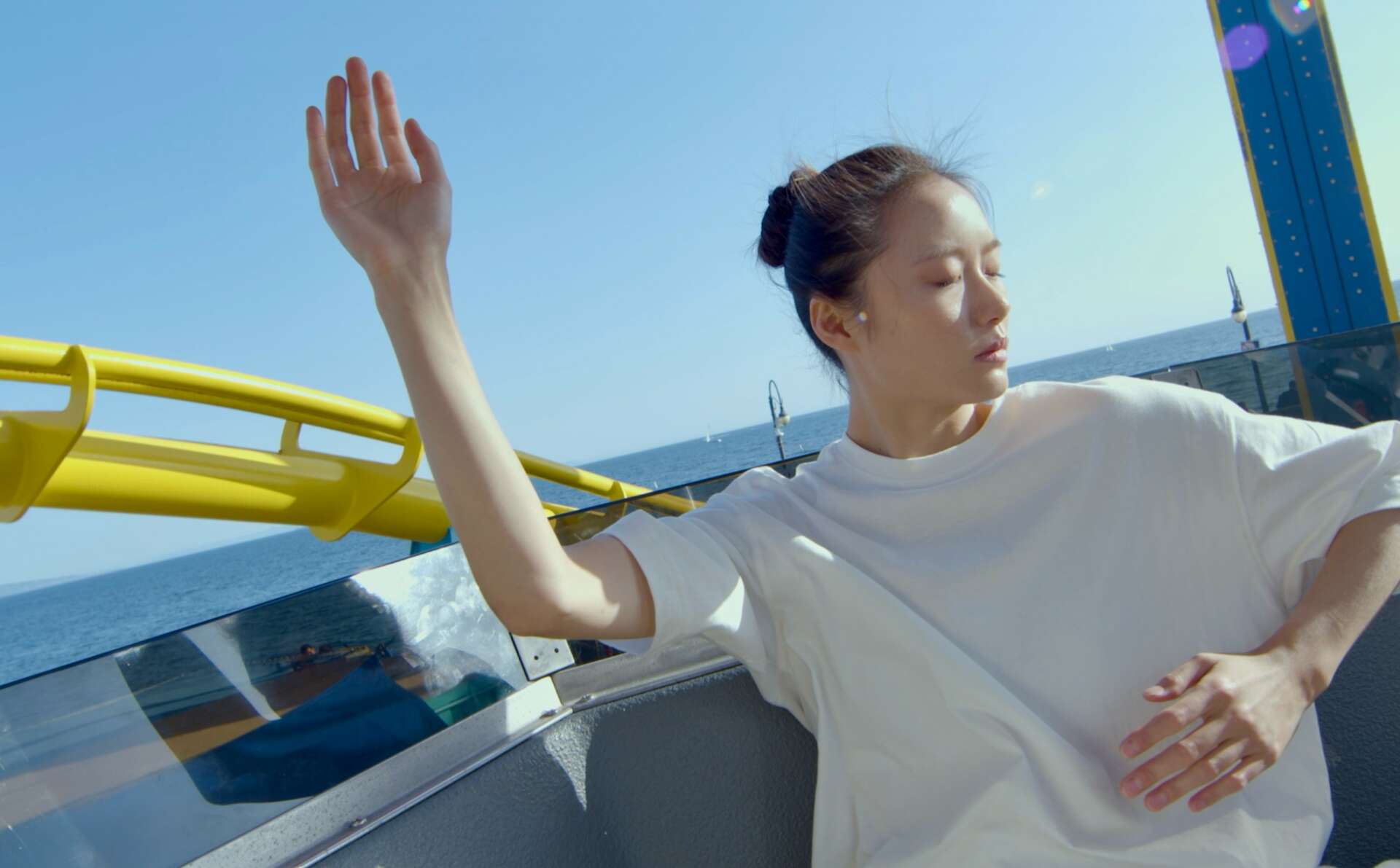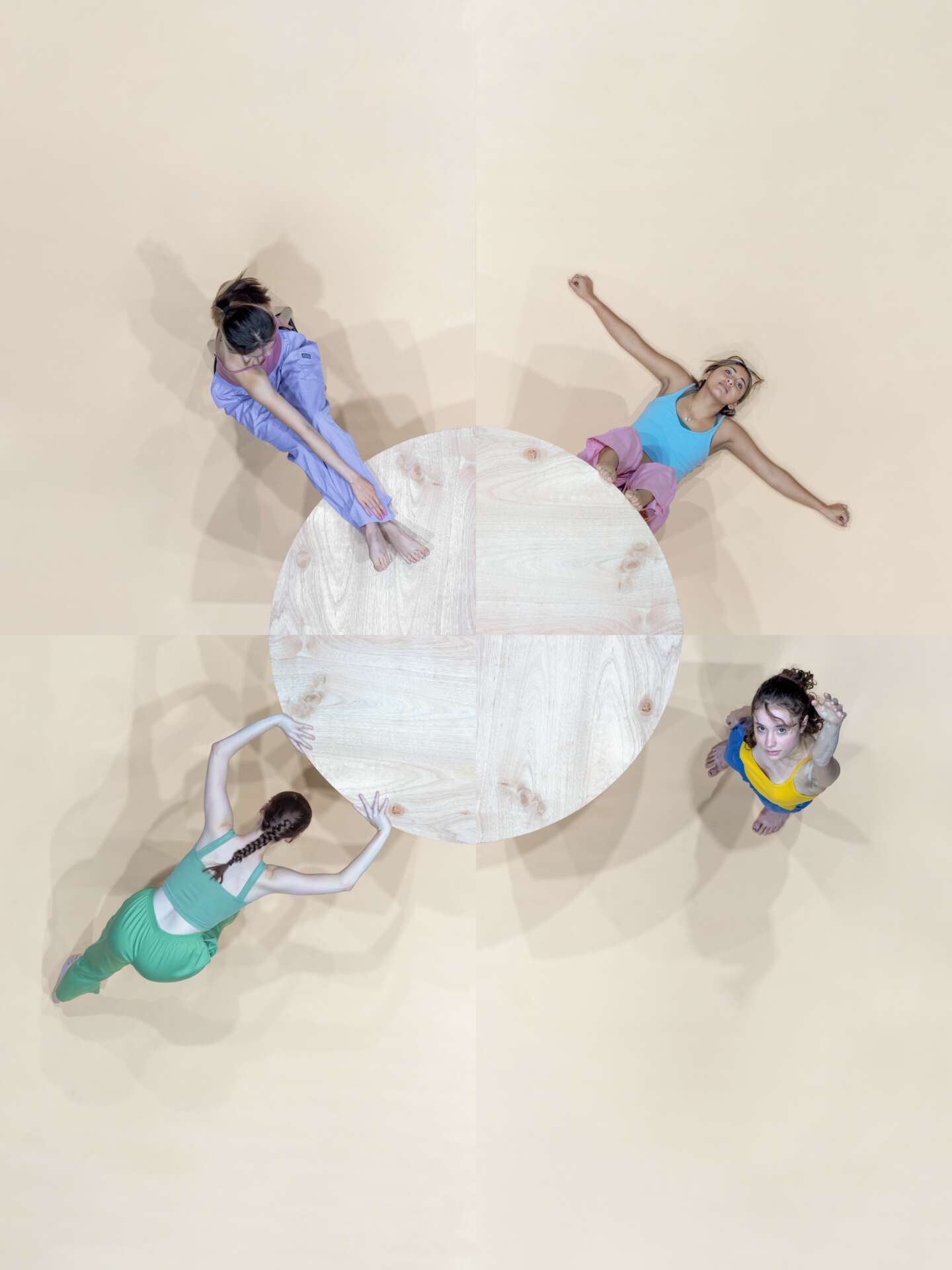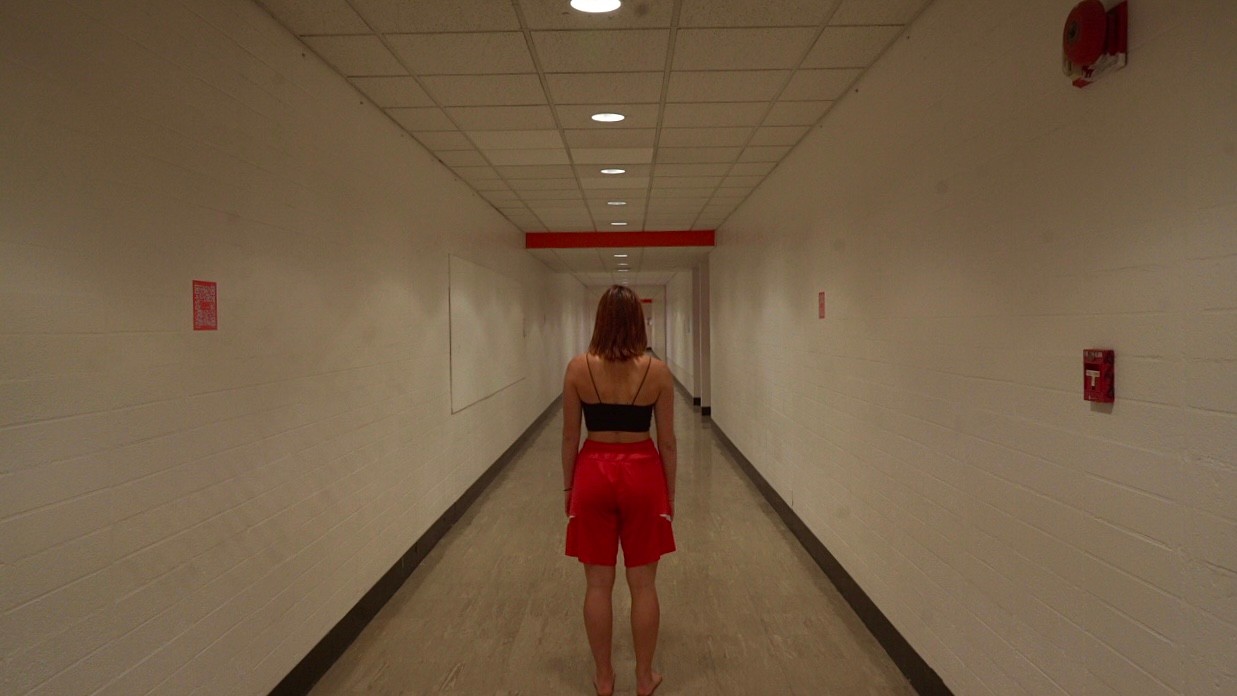We recently connected with Zhihan Yang and have shared our conversation below.
Zhihan, looking forward to hearing all of your stories today. Can you talk to us about a project that’s meant a lot to you?
I am committed to portraying the imagination in reality, and creatively reflecting on my own artistic process in my works; I am fascinated by generating a dialog with the essence of life through exploring movement. My creations focus on the body’s most primitive expressions and instinctive emotions, through this deeper level of feeling to reflect on the relationship between things. What I am currently doing and reflecting on is how to continue to find a unique language of movement within clichés and diversify the ways of audience participation and access; to push the boundaries of forms and explore new choreographic approaches, technical integration and interdisciplinary collaborations to bring innovative perspectives to dance theater.
It should not go unmentioned that the process of defining the next generation of dance theater is a collective effort of a whole generation, and I will always keep asking myself How do I want to perform? What kind of performance do I want to make? What kind of performance do I want to see?
Work life balance: how has your balance changed over time? How do you think about the balance?



Awesome – so before we get into the rest of our questions, can you briefly introduce yourself to our readers.
Hi! I am Zhihan Yang, from Hubei, China, the part of the Central China region. I am a Choreographer, dancer and educator. I received my MFA from California Institute of the Arts and BFA from Beijing Dance Academy, and is currently based in Los Angeles.
Unlike many people who have been raised in an artistic family and have pursued a career in the arts, my parents and even my entire family are not involved in the arts. Talking about my relationship with dance is a bit of a funny origin. I remember when I was in elementary school, many children would learn Latin dance in the summer, and they always walk around in a pair of golden high-heeled dance shoes after learning the dance class, on the street, in the supermarket, at the fruit stand, etc. I have a profound impression of these shoes, and as an 8-year-old child, these shoes gave me a curiosity to try them out. In order to wear these shoes, I asked my mother to send me to Latin dance lessons. In retrospect, when an iconic dance item can be found in many places and its attributes used outside of a specific scenario, it achieves a good advertising effect.
Later on, I wore those shoes as I wished and sweated profusely that summer. It was the first time that I experienced the ultimate release of my body’s power and the direct and repeated use of every muscle on the body, and that feeling was profound. But at that time, I didn’t understand what dance meant to me. Then somehow I was on the path that every Chinese kid learning to dance goes through—Chinese dance. I learned a lot of techniques and tumbling, which was very satisfying for my naughty nature. I relished the challenge of some unusual moves in which I found pleasure in the learning process, but I still didn’t care what dance really had to do with me.
After I graduated from elementary school, I was keen on performing, so I naturally entered a vocational dance school, I didn’t realize that dancing had become a part of my life and a habit in my blood since then. During my 6 years at the vocational dance school, the day after day of high-intensity training, strict standard and disciplined made me have very complex emotions about it. My muscles would take the initiative to tell me what to do, but I did not know where my consciousness was, as if all the standards had very specific rules, but I couldn’t help but face it with all my might. With the expectation of my family, and a determination to prove myself, I began my arduous and long road of art examination—a painful and valuable journey that would shape my life in important ways. In this way, through hard work and a little luck, I was accepted into the best dance school in China——Beijing Dance Academy, which was the turning point that inspired me to come to the United States to study dance. In my undergraduate studies, I was introduced to modern dance, which overturned and broke my old physical habits. The value of my body was reconstructed, which gave me a great shock. Furthermore, in this process, a sense of consciousness and autonomy slowly woke up, and I found the connection that was invisible but could be described by the body. I couldn’t help wanting to explore more, which is why I came here.
I have been active in theater, media, film, and education in recent years, working with companies such as the Pacific Symphony Orchestra, the Los Angeles Museum of Art, the Yaya Dance Academy, and the San Musae Cultural Center in the United States. Among my awards are the Double Platinum Award and Overall First Placing in the Showstopper Dance Competition, the Oniros Film Awards for Best Dance Choreography, a Top 10 Finalist at the Festigious International Film Festival, Best Dance Film at the Experimental Film & Music Video Festival, Short Dance Film Finalist at the Vesuvius International Film Festival, and Outstanding Official Selection at the 92Y Mobile Dance Film Festival.
My recent works include the solo work *Bounces of the Wild* (2024), the environmental piece *Metam.* (2023) with Heidi Duckler Dance, the orchestral trio choreography *THEA MUSGRAVE: Pierrot* (2023), the dance theater *Am I Susan* (2022), the physical theater *XXX* (2022), and the quintet *Gladiola* (2021), as well as the dance films *As a Girl* (2023), *Question* (2022), *Rush* (2021), *Refresh* (2021), and *Retrospect* (2021).



What do you think is the goal or mission that drives your creative journey?
I have always sought to break out of the familiarity that dance brings me, when I was working in more contexts, as the work itself demanded to be better perceived, that other mediums were needed. After that, I was introduced to the dramaturgy and I have always been fascinated by the intersection of different art forms and how they reinforce and complement each other. For me, dance and multimedia offer a unique opportunity to create multisensory experiences that are visually and emotionally mesmerizing.
My inspiration for combining dance and multimedia comes from a desire to push the boundaries of traditional artistic expression. I believe that the forms should evolve and develop with the times, and in our increasingly digital and connected world, multimedia allows us to connect with audiences in fresh and exciting ways. Dance as a form of expression is capable of conveying emotions and stories through the body. When combined with multimedia elements such as projection mapping, interactive visuals or virtual reality, the possibilities for storytelling and emotional resonance become endless.
Integrating technology and multimedia into dance creates a more immersive and interactive experience for the audience and myself. It allows us to break free from the constraints of traditional stage settings and create dynamic, ever-changing environments that transport the audience to different worlds or perspectives. The inspiration of combining dance and multimedia has given me a passion for innovation and a belief in the energy of art to connect with people on a deep level. I see this fusion as a way to challenge tradition and explore new forms of expression.
What do you find most rewarding about being a creative?
As an artist and creator, I really feel that watching and witnessing the growth of a piece can grow on me. In this process, I am able to learn a lot of practical skills, and at the same time, my attitude and perspective towards the world has become more diversified, and I can feel the joy and satisfaction of self-realization.
The first thing that comes to mind is the influence that music has had on me. Before learning to dance as a child, the first art I was exposed to learning was the piano, and music became my earliest connection to the arts. When I didn’t have much creative inspiration, I would listen to a lot of music, trying to find a place for my thoughts to stay grounded. After studying some music theories, I gradually found the structure of compositions. Through this kind of thinking, I was able to find the rules of compositional structure in choreography, which inspired me in the method of music choreography.
I have experienced different dance styles and with the knowledge of multiple genres, I can try to blend them to create my own dance vocabulary. Whether it’s incorporating modern dance with traditional elements, or combining Eastern movement styles with Western thinking, my past experiences have allowed me to explore new artistic territories. It is also the richness of my learning process that I have more choices. I am able to work with a variety of dancers and adapt my choreography to their strengths and abilities, allowing me to move quickly into an effective rehearsal process.
I am fascinated by film, since then, I have been fortunate enough to take courses in dance film and my learning experiences in this discipline have enhanced my ability to use the visual as a narrative tool. I can think in a way of narrative and structure to include elements to the creation of the dance, which can help the final presentation of the work to be accurate. Film gives me a strong visual narrative, and I sometimes draw inspiration from imagining camera languages, lighting, and aspects of a scene when creating a piece. I try to incorporate visual elements into the choreography to bring the audience a multi-dimensional, multi-spatial, and multi-sensory experience within the limited space of the current venue.
Contact Info:
- Website: zhihanyangdance.com
- Instagram: _zhihanyang_
Image Credits
Shiqing Ban


